Are you sure you know what IP44 means? Getting this simple rating wrong can lead to failed projects and costly replacements, which nobody wants. Let's make sure that doesn't happen.
An IP44 rating means the LED downlight is protected against solid objects larger than 1mm (like wires) and water splashes from any direction. It is considered "splash-proof," making it suitable for damp locations but not for full water immersion or high-pressure jets.
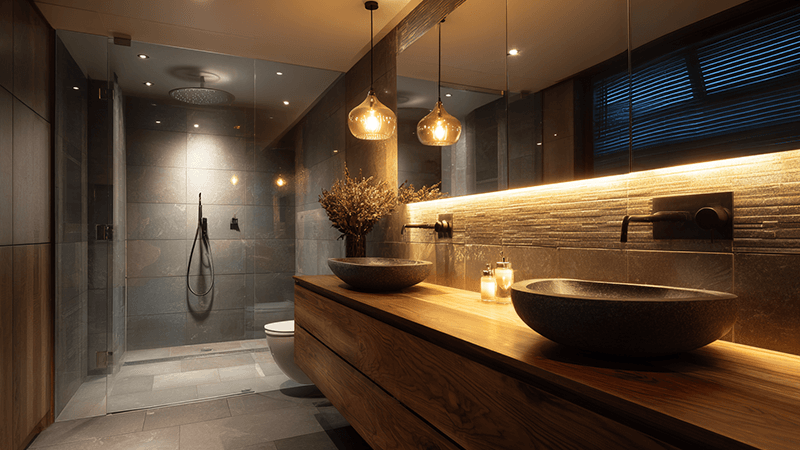
So, we know IP441 means splash-proof2. That seems simple enough. But as a purchasing manager, you know the details are what make or break a project. Is being splash-proof the same as being waterproof? And how does an IP44 rating on a cheap downlight compare to one from a quality manufacturer like us? There's more to this than just two numbers. Let's dig deeper into what this rating really means for your projects and how to choose wisely.
Is IP44 Fully Waterproof?
Thinking "IP44" equals "waterproof" is a common and risky assumption. This mistake can cause fixtures to fail, leading to safety hazards and expensive callbacks on your projects.
No, IP44 is not fully waterproof. It is correctly defined as water-resistant3 or splash-proof. It can handle splashes from any direction, but it cannot withstand being submerged in water or being hit with powerful water jets. For true waterproofing, you need a higher rating.
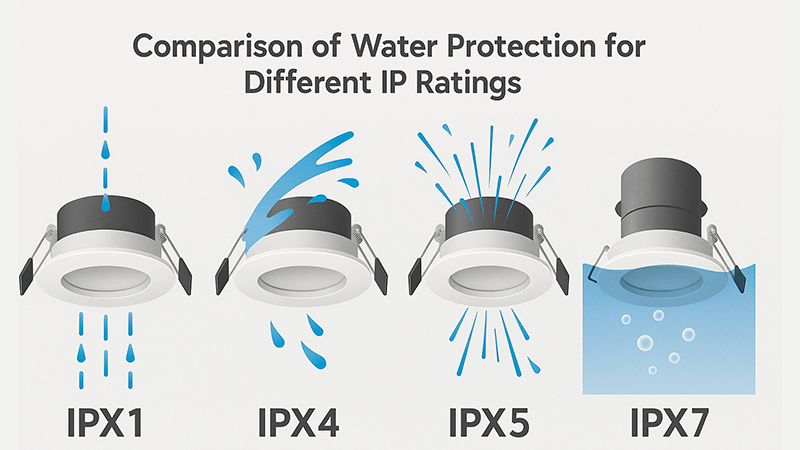
When I first started in this industry, a client asked me for "waterproof" lights for a hotel bathroom renovation. They were looking at IP44 downlights to save on costs. I had to explain that while IP44 is perfect for most of the bathroom ceiling4, it's not suitable for inside the shower area, which is classified as Zone 1. In that area, you need at least an IP655 rating to protect against water jets from the showerhead. Using an IP44 fixture there would lead to almost certain failure.
The "IP" in IP rating stands for Ingress Protection. The two numbers that follow have specific meanings.
- First Digit (Solids): How well it's protected from solid objects.
- Second Digit (Liquids): How well it's protected from liquids.
Let's look at how IP44 compares to truly waterproof ratings.
| IP Rating | Protection Against Solids | Protection Against Water | Common Use Case |
|---|---|---|---|
| IP44 | Protected against objects >1mm (e.g., tools, wires). | Protected against splashing water from any direction. | Bathroom (outside shower), kitchen, covered porch. |
| IP65 | Dust Tight. No ingress of dust at all. | Protected against low-pressure water jets from any direction. | Bathroom (inside shower zone), outdoor walls, garden lighting. |
| IP67 | Dust Tight. No ingress of dust at all. | Protected against temporary immersion in water (up to 1m for 30 mins). | Poolside areas, decks, landscape up-lighting. |
As you can see, there's a huge difference between the splash protection of IP44 and the immersion protection of IP67. For a purchasing professional like Shaz, specifying the correct IP rating for each zone in a project is not just about compliance; it's about ensuring the long-term reliability and safety of the installation. Choosing IP44 where IP65 is needed is a recipe for failure.
What Does Real IP44 Protection Mean for Performance?
You found an IP44 downlight that fits your budget. But after a year, it's dim, and the client complains about the light quality. The IP rating didn't stop poor performance.
True IP44 protection is more than a sealed housing. It means the internal components—the driver, LED chip, and heatsink—are high quality. This ensures the downlight not only resists moisture but also delivers stable, consistent, and long-lasting performance throughout its lifespan.
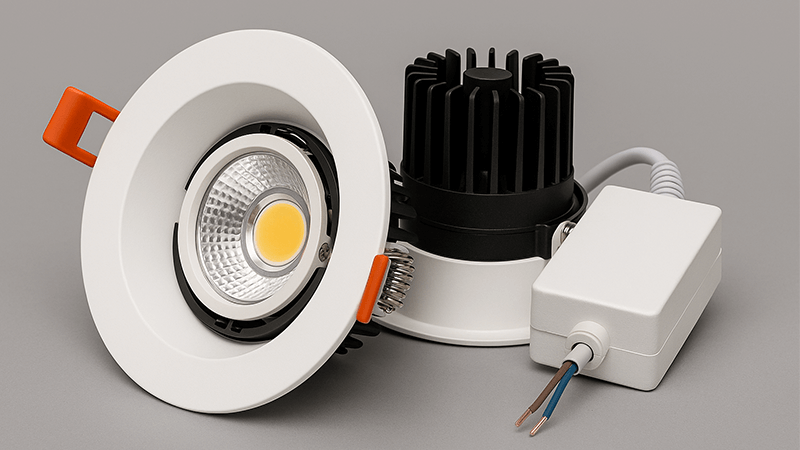
The IP rating only tells you how well the fixture keeps things out. It says nothing about the quality of the light that comes out. Over my years building iPHD, I've seen countless examples where two IP44 products delivered wildly different results. The difference is always in the engineering that you can't see from the outside. A good manufacturer obsesses over these details because we know they are what define a product's true value.
The Hidden Cost of Poor Thermals
An IP44-rated downlight is more sealed than an IP20 one. This is great for stopping water, but it can also trap heat. Heat is the number one enemy of LED performance and lifespan. If the manufacturer uses a cheap, undersized heatsink, the LED chip will overheat. As I'm sure you know, this causes the light output to drop dramatically over time. This is called lumen decay6.
From our own testing, the difference is shocking.
- High-Quality IP44 Downlight: With a robust aluminum heatsink and quality LED chips7, we see less than a 5% drop in brightness after 5,000 hours.
- Low-Quality IP44 Downlight: With a plastic body or poor thermal design8, we've seen brightness drop by over 30% in the same amount of time. The client gets a dim, useless light only a year or two after installation.
What to Look for Beyond the IP Code
As a purchasing manager, you have the power to ask the right questions to avoid these problems. When sourcing IP44 downlights, push beyond the basic spec sheet.
- Ask for Driver Specs: Is it flicker-free9? A quality isolated driver provides stable current, protecting against flicker that causes eye strain and headaches.
- Ask about Color Consistency: How do they ensure lights in the same batch look identical? We use a tight "binning" process, sorting LEDs to a 3-step MacAdam ellipse to guarantee uniformity.
- Ask for Test Reports: Request the LM-80 report for the LED chips and the TM-21 projection for the luminaire. A reputable manufacturer will have this data ready. It proves their claims about lifespan and lumen maintenance.
Your supplier's response to these questions will tell you everything you need to know about their commitment to quality.
Which is Better, IP44 or IP65?
It's tempting to think higher is always better when choosing between IP44 and IP65. But specifying IP65 everywhere can inflate your project budget10 unnecessarily for no added benefit.
Neither rating is better; the right choice depends on the specific location. IP44 is sufficient and cost-effective for indoor damp areas like kitchens. IP65 is necessary for areas exposed to direct water jets, like showers or outdoor spaces that will be hosed down.
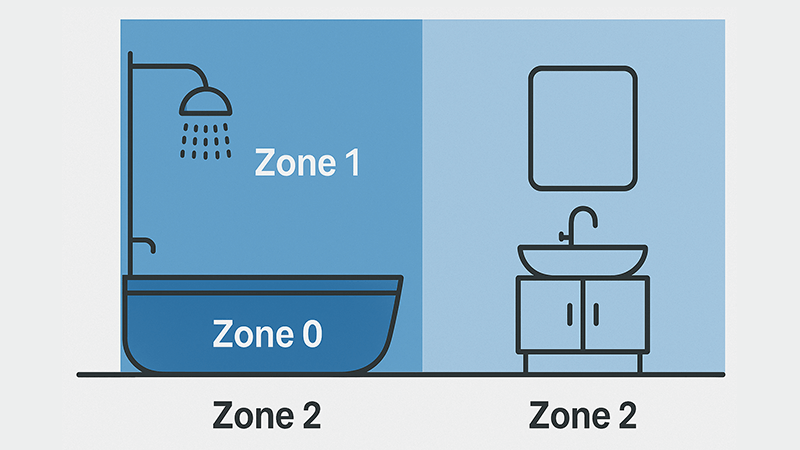
The key is to match the protection level to the environmental risk. Over-specifying is as much a mistake as under-specifying, especially when managing a tight budget for a large project. The cost difference between an IP44 and an IP65 downlight can be significant when you're buying hundreds or thousands of units. Your expertise comes from knowing exactly where that extra cost is justified.
Let's break down the practical differences for lighting applications.
| Feature Comparison | IP44 | IP65 |
|---|---|---|
| Solid Protection | 1mm or larger. Good for stopping fingers, tools, and most wires. | Dust-Tight. Complete protection. Essential for dusty sites or clean environments. |
| Water Protection | Splashes. Protects against water splashed from any angle. | Low-Pressure Jets. Protects against water from a nozzle (6.3mm). |
| Best Application | General bathroom areas, kitchens, covered balconies. | Shower enclosures, outdoor soffits, building exteriors, wash-down areas. |
| Cost Implication | More economical. | Higher cost due to more robust seals and construction. |
A useful framework for this is the concept of bathroom electrical zones11:
- Zone 0: Inside the bath or shower. Requires IP67 (immersion proof).
- Zone 1: The area directly above the bath or shower. Requires IP65 to protect from shower jets.
- Zone 2: The area just outside the shower or bath (0.6m perimeter). IP44 is required here as it's only subject to splashes.
- Outside Zones: Any area outside of zones 0, 1, and 2. No specific IP rating is required, but IP44 is often used for overall durability.
For a project manager in the UAE, the "dust-tight12" aspect of IP65 is also a critical consideration. For projects in dusty or sandy environments, even if there's no water risk, an IP65 rating provides superior protection for the fixture's internal components, ensuring a longer operational life.
What Does IP44 Mean in LED Lighting Quality?
You see "IP44" on a data sheet and assume it meets the standard. But in damp areas, two IP44 lights can perform very differently, impacting safety and client satisfaction.
In LED lighting, IP44 shows a fixture is suitable for damp locations like bathrooms. Critically, a quality IP44 downlight also features superior glare control, flicker-free drivers, and consistent color temperature, which are essential for comfort and performance in these reflective environments.
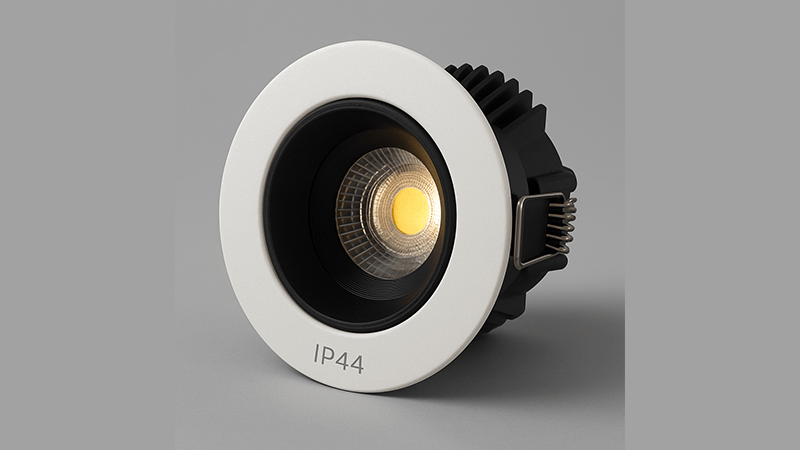
As a manufacturer, I can tell you that simply adding a gasket to get an IP44 rating is easy. Building a good IP44 luminaire is hard. The real challenge is managing the unique demands of damp locations. These spaces often have hard, reflective surfaces like tiles, mirrors, and stainless steel, which makes light quality even more important. Cheap IP44 lights often fail here, not because water gets in, but because the light they produce is uncomfortable and low-quality.
Beyond Splashes: Controlling Glare in Damp Spaces
I once visited a newly opened hotel where the bathrooms were fitted with cheap IP44 downlights. When you stood at the vanity, the reflection of the downlights in the mirror and on the wet countertop was blinding. It was incredibly uncomfortable. This is a classic sign of poor optical design13.
- A quality IP44 downlight will use a deep-set reflector or an engineered lens to control the beam and shield the light source. This reduces glare significantly, creating a much more comfortable and luxurious feel, which is exactly what a hotel guest expects.
The Unseen Enemy: The Flicker Factor
The driver is the heart of an LED downlight14. In a humid bathroom environment, you want a reliable one. But reliability is more than just turning on. Low-quality drivers can produce high-frequency flicker that isn't visible to the naked eye but can cause headaches and eye strain over time.
- A premium driver provides a clean, low-ripple current that results in zero perceptible flicker. This is a "feel" difference that isn't on a spec sheet, but it's something people notice. At iPHD, we only use drivers that pass our strict flicker tests because we believe quality lighting15 should enhance well-being.
Ensuring Color Consistency is King
Imagine specifying 20 IP44 downlights for a large commercial washroom, only to have them installed and see that some are a yellowish-white and others are a cool, blue-white. It looks unprofessional and cheap. This is a common issue with manufacturers who don't control their color binning.
- Reputable manufacturers source LED chips sorted into very tight "bins" to ensure color consistency16. This means every light in an order will have the exact same color temperature, providing a clean, professional look across the entire installation.
Conclusion
In short, IP44 means splash-proof, not waterproof. The "best" rating depends on the location, but true value comes from the quality of the components inside the protected housing.
Understanding IP44 is crucial for selecting the right lighting for damp areas, ensuring safety and performance. ↩
Explore the concept of splash-proof lighting to ensure your fixtures are suitable for wet environments. ↩
Learn the distinctions between water-resistant and waterproof ratings to make informed purchasing decisions. ↩
Find out the best lighting options for bathroom ceilings to enhance both safety and aesthetics. ↩
Understand the IP65 rating to determine its suitability for areas exposed to water jets. ↩
Learn about lumen decay to understand how LED performance can diminish over time. ↩
Learn about LED chips to understand their impact on brightness and color consistency. ↩
Understand the importance of thermal design in LED fixtures to prevent overheating and ensure longevity. ↩
Learn about flicker-free lighting to enhance comfort and reduce eye strain in various environments. ↩
Explore strategies for managing project budgets while ensuring quality lighting solutions. ↩
Explore bathroom electrical zones to ensure compliance and safety in lighting installations. ↩
Learn about dust-tight ratings to ensure your fixtures are protected in challenging environments. ↩
Discover the role of optical design in creating comfortable and effective lighting solutions. ↩
Discover the advantages of LED downlights for energy efficiency and longevity in various applications. ↩
Understand the elements of quality lighting to create inviting and functional commercial environments. ↩
Discover why color consistency matters for aesthetic appeal and professional installations. ↩

